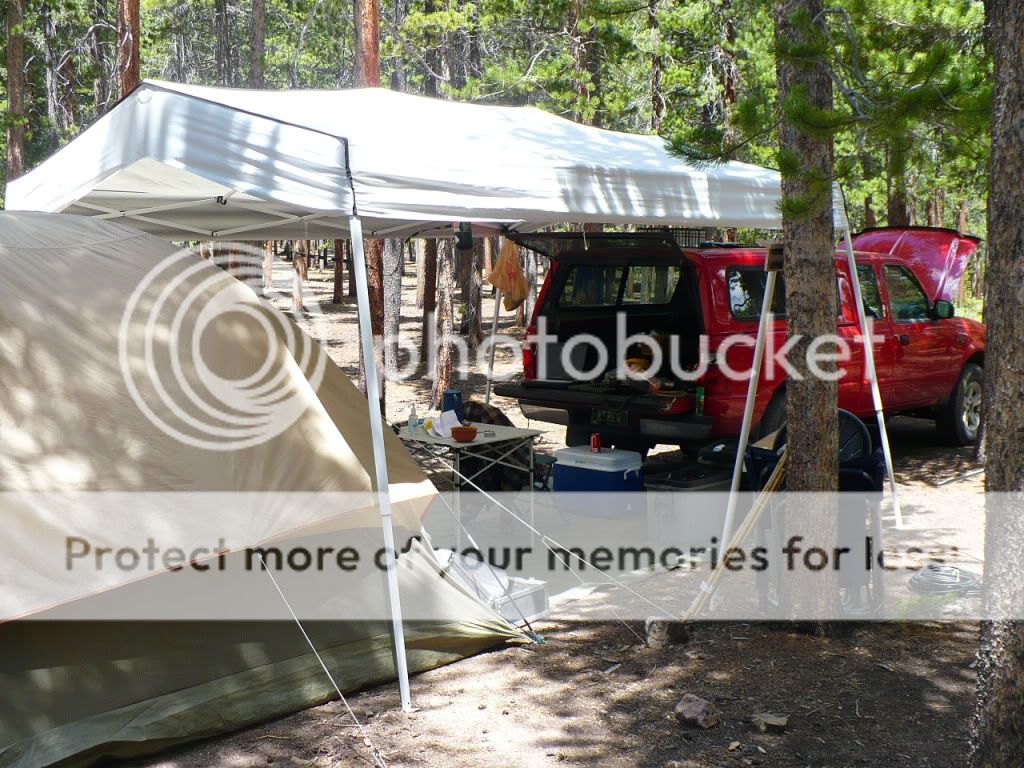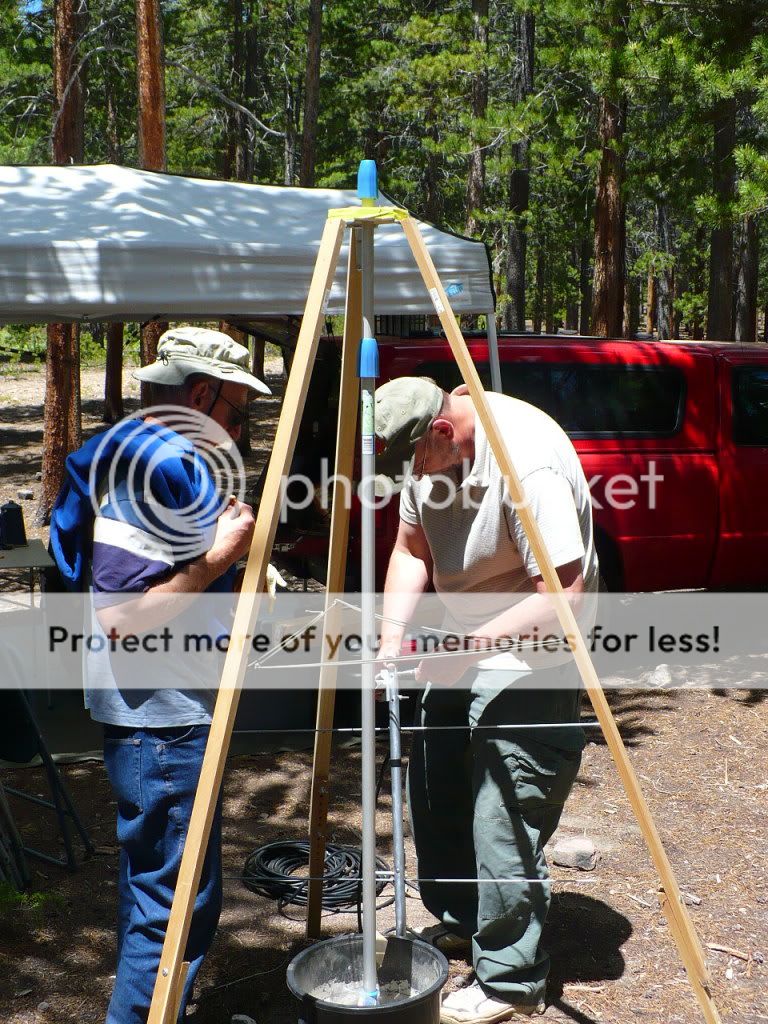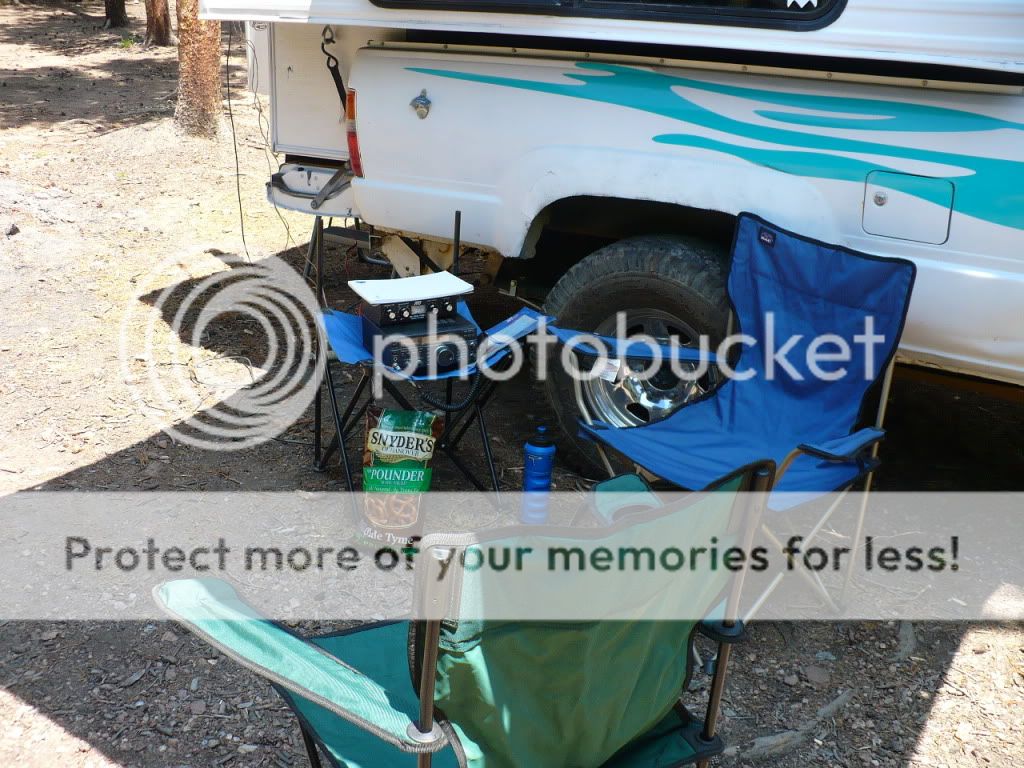tanglefoot
ExPoseur
Just winding down from a fun Field Day weekend this year.
Field day, for those who aren't familiar, is a national event that is designed to be an exercise in emergency communications preparation. It is an on-the-air contest where stations try to reach other stations across the US and Canada. The intent is for the stations to be operating from unconventional power sources (not the power grid) although stations plugged into the wall can also participate. Stations earn points for contacts and can submit point totals to be eligible for awards. The contest is organized by the American Radio Relay League (www.arrl.org).
This year, I went to nearby Nederland, Colorado with my Dad and a few other hams to set up some field stations and camp. We were just off the Haul Road in a group of back country sites established by the Forest Service. This area was so much busier this year than last--last year we barely caught sight or sound of anyone else.
Dave (my radio and banjo mentor) sets up a comfy shack with a portable shelter covering the gap between his truck tailgate and tent. He was using an Elec-Craft K2 low-power transceiver and a multi-band dipole suspended in the trees for most of the operating. He also experimented with a 2-meter beam antenna and a homemade 6-meter antenna that worked really well for him.

Here's his home-made tripod for elevating the 2-meter beam and 6-meter antennas.

I was using a Yaesu FT-840 transceiver running off the camper's electrical system (deep cycle battery and 10-watt solar charger). The antenna was a Hustler vertical with different stingers for each band and two wire radials strung out across the ground (more radial wires would be better).

I didn't make too many contacts, but didn't spend too much time at the radio. We were also riding mountain bikes, picking bluegrass music, shooting the breeze and exploring the little hiking trails that wound around the forest service roads.


The contest runs for 24-hours (noon Saturday to noon Sunday here in the mountain time zone). I brought the radio inside when the air turned cooler and worked a few more stations until I drew the voltage down too low in the camper battery. It was about time to turn in for the night anyway. I'm not much for over-night radio operating like the die-hards. I was able to make contact with a handful of US operators and two from Canada. The kids at the youth station down in Boulder make several hundred contacts each, but they really know what they're doing--I can't compare myself to them!
For those starting out in radio or wanting to learn, contests like these are a great way to get started. The contacts are very quick, consisting of callsign, state, and a station code (I was 1B: a 1-transmitter station running off emergency power). Most operators are helpful and patient with new hams, and there are plenty of stations on the air to reach. There is some kind of a contest almost every weekend even though Field Day only happens the last weekend in June each year.
73 (talk to you later)
Eric
Field day, for those who aren't familiar, is a national event that is designed to be an exercise in emergency communications preparation. It is an on-the-air contest where stations try to reach other stations across the US and Canada. The intent is for the stations to be operating from unconventional power sources (not the power grid) although stations plugged into the wall can also participate. Stations earn points for contacts and can submit point totals to be eligible for awards. The contest is organized by the American Radio Relay League (www.arrl.org).
This year, I went to nearby Nederland, Colorado with my Dad and a few other hams to set up some field stations and camp. We were just off the Haul Road in a group of back country sites established by the Forest Service. This area was so much busier this year than last--last year we barely caught sight or sound of anyone else.
Dave (my radio and banjo mentor) sets up a comfy shack with a portable shelter covering the gap between his truck tailgate and tent. He was using an Elec-Craft K2 low-power transceiver and a multi-band dipole suspended in the trees for most of the operating. He also experimented with a 2-meter beam antenna and a homemade 6-meter antenna that worked really well for him.

Here's his home-made tripod for elevating the 2-meter beam and 6-meter antennas.

I was using a Yaesu FT-840 transceiver running off the camper's electrical system (deep cycle battery and 10-watt solar charger). The antenna was a Hustler vertical with different stingers for each band and two wire radials strung out across the ground (more radial wires would be better).

I didn't make too many contacts, but didn't spend too much time at the radio. We were also riding mountain bikes, picking bluegrass music, shooting the breeze and exploring the little hiking trails that wound around the forest service roads.


The contest runs for 24-hours (noon Saturday to noon Sunday here in the mountain time zone). I brought the radio inside when the air turned cooler and worked a few more stations until I drew the voltage down too low in the camper battery. It was about time to turn in for the night anyway. I'm not much for over-night radio operating like the die-hards. I was able to make contact with a handful of US operators and two from Canada. The kids at the youth station down in Boulder make several hundred contacts each, but they really know what they're doing--I can't compare myself to them!
For those starting out in radio or wanting to learn, contests like these are a great way to get started. The contacts are very quick, consisting of callsign, state, and a station code (I was 1B: a 1-transmitter station running off emergency power). Most operators are helpful and patient with new hams, and there are plenty of stations on the air to reach. There is some kind of a contest almost every weekend even though Field Day only happens the last weekend in June each year.
73 (talk to you later)
Eric
Last edited:
